 || A Closer Look at The Moon
|| A Closer Look at The Moon
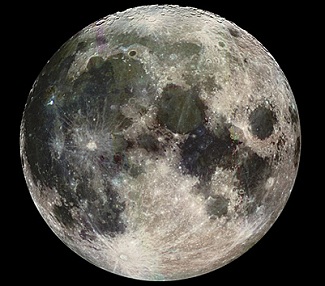 The Glory of a Full Moon
The Glory of a Full Moon
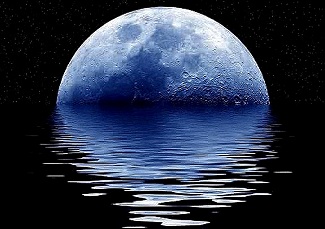
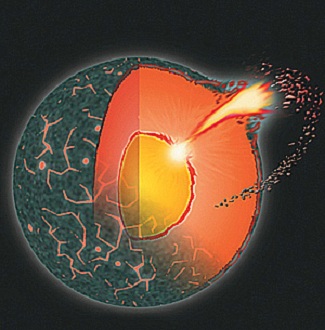 The Birth of our Moon..?
The Birth of our Moon..?
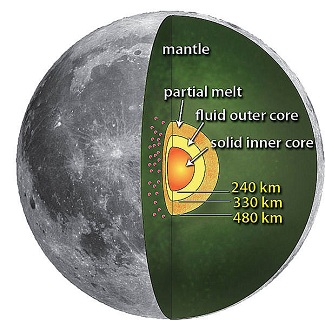 Inner Structure of the Moon
Inner Structure of the Moon
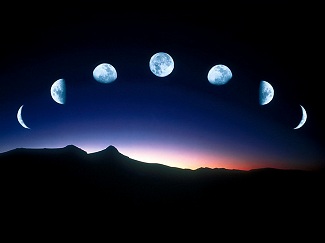 The Different Phases of the Moon
The Different Phases of the Moon

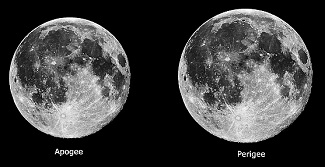 Same Observation Point for Perigee and Apogee Moon Size
Same Observation Point for Perigee and Apogee Moon Size
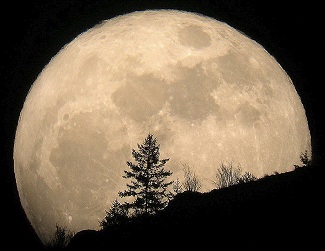
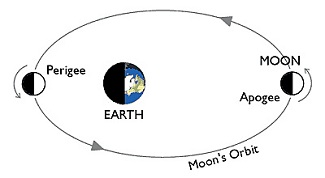
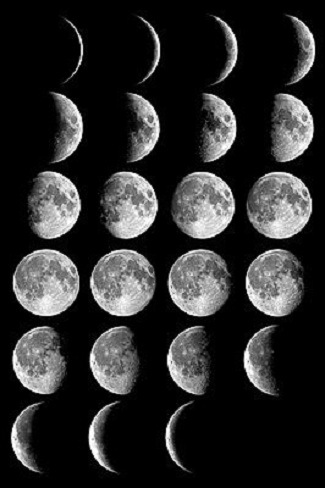 Overview of all Moon Phases
Overview of all Moon Phases
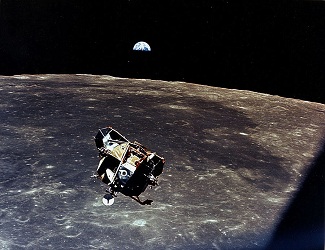 One of the Apollo Missions is Preparing for Another U.S Moon Landing
One of the Apollo Missions is Preparing for Another U.S Moon Landing
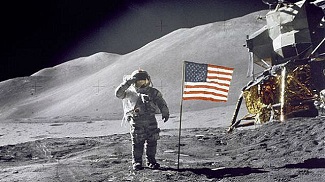 A Farewell Salute from the Moon during the last Apollo 17 Mission
A Farewell Salute from the Moon during the last Apollo 17 Mission
 NASA Rendering of Future Lunar Soil Drilling and an Exploration Rover
NASA Rendering of Future Lunar Soil Drilling and an Exploration Rover
The Moon
The Moon is the only Natural Satellite of the Earth
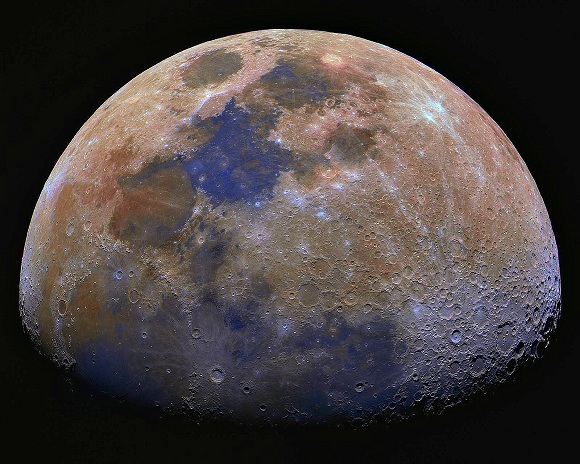
Facts about the Moon:
Mean Distance from Earth: 238854 miles
Equatorial Radius: 1080 Miles (0.273 Earths)
Equatorial Circumference: 6786 miles
Equatorial Rotation Velocity: 10.350 mph m/s
Mean Density: 3.3464 g/cm²
Mass: 7.3477 × 10²² kg (0.0123 Earths)
Rotation Period (Days): 27.321582 Days
The History & Characteristics of the Moon
Several Mechanisms have been proposed for the Moon's formation 4.527 ± 0.010 Billion Years ago, some 30-50 Million Years after the Origin of the Solar System.
These included the Fission of the Moon from the Earth's Crust through Centrifugal Force, (which would require too great an initial spin of the Earth), the Gravitational Capture of a Pre-Formed Moon, (which would require an unfeasibly extended atmosphere of the Earth to dissipate the energy of the passing Moon), and the Co-Formation of the Earth and the Moon together in the primordial Accretion Disk (which does not explain the depletion of metallic iron in the Moon).
Several Hypothesis Today are that the Earth-Moon System formed as a result of a Giant Impact: a Mars-sized body hitting the newly formed proto-Earth, blasting material into orbit around it, which Accreted to form the Moon. Giant impacts are thought to have been common in the early Solar System. Earth and Moon have near-identical Isotopic Compositions.
Geophysicists also argue that it was Created not by this Massive Collision 4.5 billion years ago, but by a Runaway Nuclear Reaction deep inside the Young Earth.
Internal Structure
The Moon is the second Densest Satellite in the Solar System after Io.
The Moon is a Differentiated Body: it has a Geochemically Distinct Crust, Mantle, and Core. The Moon has a Solid Iron-rich Inner Core with a Radius of 240 kilometers and a Fluid Outer Core primarily made of Liquid Iron with a Radius of roughly 300 kilometers.
Around the Core is a Partially Molten Boundary Layer with a radius of about 500 kilometers. This Structure is thought to have developed through the fractional Crystallization of a Global Magma Ocean shortly after the Moon's formation 4.5 billion years ago.
Consistent with this, Geochemical Mapping from Orbit shows the crust is mostly Anorthosite, and Moon Rock Samples of the Flood Lavas erupted on the Surface from Partial melting in the Mantle confirm the Mafic Mantle Composition, which is more Iron rich than that of Earth.
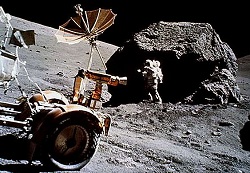
Collection of Moon Rocks during the last Apollo Mission
The Different Phases of the Moon
A Lunar Phase or Phase of the Moon is the Appearance of the Illuminated (Sunlit) Portion of the Moon as seen by an Observer, usually on Earth.
The Lunar Phases change Cyclically as the Moon Orbits the Earth, according to the changing Relative Positions of the Earth, Moon, and Sun.
The half of the Lunar Surface facing the Sun is always Sunlit, but the Portion of this Illuminated Hemisphere that is visible to an Observer on Earth can vary from about 100% (Full Moon) to 0% (New Moon).
Lunar Phases are the result of looking at the Illuminated Half of the Moon from different Viewing Geometries; they are not caused by the Shadow of the Earth or Umbra Falling on the Moon's Surface (this occurs only during a Lunar Eclipse).
The Time between two Full Moons (a Lunar Month) is about 29.53 days (29 days, 12 hours, 44 minutes) on Average.
The Current Phase of the Moon:
"Super Moon" - Perigee Moon versus Apogee Moon
Apogee and Perigee refer to the Distance from the Earth to the Moon.
Apogee is the Farthest Point from the Earth. Perigee is the Closest Point to the Earth and it is in this stage that the Moon Appears Larger.
Looking at the Moon in the Sky without anything to Compare it to, you wouldn't notice any Size Difference. But the Difference in Size can in fact be quite Significant (14%).
If you were to Photograph a Full Moon at Apogee and Perigee (using the same lens), see Image on the Left to Compare the two Sizes.
The Apogee and Perigee of the Moon have an Effect on the Tides here on Earth. When the Moon is at Apogee, the Furthest Distance from the Earth, it has Less Gravitational Pull which, along with other Factors that Influence the Tides, can Contribute to Lower Tides or Lower Variation in the High/Low Tide Level.
When the Moon is at Perigee, this Contributes to the Opposite Effect. (Higher variation in Tides)
.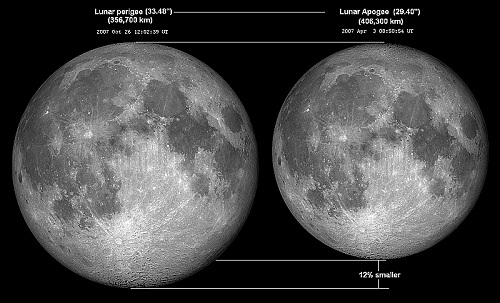
Comparison Perigee & Apogee Moon
The Moon Cycle
The Term "Moon Cycle" refers to the Moon's Continuous Orbit around the Earth.
As the Moon Orbits the Earth, its Appearance (the "Phase") changes and thus gives us an Indication of the Moon's progress in the Cycle (the "Age").
The Sun always Illuminates exactly One-Half of the Moon, but we see it at Different Angles as it Rotates around the Earth.
With the naked Eye, we can see only the Part of the Moon that the Sun is Illuminating. For instance, a Crescent Moon is what we call the Moon when we see only a Small Portion of its Illuminated Surface.
We give the Parts of the Moon Cycle Different Names, according to how the Moon Appears to us.
In Order of Appearance:
New Moon (Also called the Dark Moon) - Not Visible
Waxing Crescent
First Quarter (Commonly called a "Half Moon")
Waxing Gibbous
Full Moon(We can see the Entire Illuminated Portion of the Moon)
Waning Gibbous
Third Quarter (Another "Half Moon", but the Illuminated Part is Opposite of the First Quarter)
Waning Crescent
New Moon (Back to the beginning)
NASA and the Moon Exploration
U.S. President John F. Kennedy looked for an American Project that would Capture the Public Imagination, however a Manned Moon Landing posed Several Daunting Technical Challenges to the U.S.
The Saturn V booster became the Key to U.S. Moon landings.
Vice President Johnson also Championed the Apollo Program. After he became President in 1963, his Continuing Defense of the Program Allowed it to Succeed in 1969.
The Apollo 11 was the first Manned Mission to Land on the Moon on 20 July 1969.
A Total of Twelve Men have Landed on the Moon.
This was Accomplished with two US Pilot-Astronauts flying a Lunar Module on each of six NASA Missions across a 41-month time span.
Apollo 17 was the Eleventh and Final Manned Mission in the United States Apollo Space Program, which Included a Three-Day Stay on the Moon Surface. Launched at 12:33 a.m. EST on 7 December 1972, Apollo 17 remains the most recent Manned Moon landing and the most recent Manned Flight beyond Low Earth Orbit.
After the Apollo 17 Mission in 1972, the Moon has been visited only by Unmanned Spacecraft, notably by the Final Soviet Lunokhod Rover.
Since 2004, Japan, China, India, the United States, and the European Space Agency have each sent Lunar Orbiters.
The most recent Lunar Mission has been the NASA's Lunar Reconnaissance Orbiter mission.
The Lunar Precursor Robotic Program (LPRP) is a Program of Robotic Spacecraft Missions which NASA will use to Prepare for Future Human Spaceflight Missions to the Moon.
Two Missions, the Lunar Reconnaissance Orbiter (LRO) and the Lunar Crater Observation and Sensing Satellite (or LCROSS) were Launched on 18 June 2009.
We are Preparing for Humanity's Return to the Moon. Over the next Couple of Years, at least Four International Robotic Missions will Orbit the Moon, making Global Maps of Unsurpassed Quality. We will Soft Land on the Moon, Particularly the Mysterious Polar Regions, to Map the Surface, Examine the Volatile Deposits and Characterize the Unusual Environment there.
Ultimately, People will Return to the Moon.
The Goals of Lunar Return this Time are not to Prove that We Can Do It (as Apollo did) but to Learn how to use the Moon to Support a New and Growing Spacefaring Capability.
On the Moon, We will learn the Skills and Develop the Technologies needed to Live and Work on Another World. We will use this Knowledge and Technology to open the Solar System for Human Exploration.
According to the New Vision for Space Exploration, NASA plans to Return to the Moon in the year 2020. The Present Project Anticipates Four to Six Crew Members who will Complete Lunar-Surface Exploration for 60-180 Days. The Earth-Moon Cruise Lasts about 4 Days.

